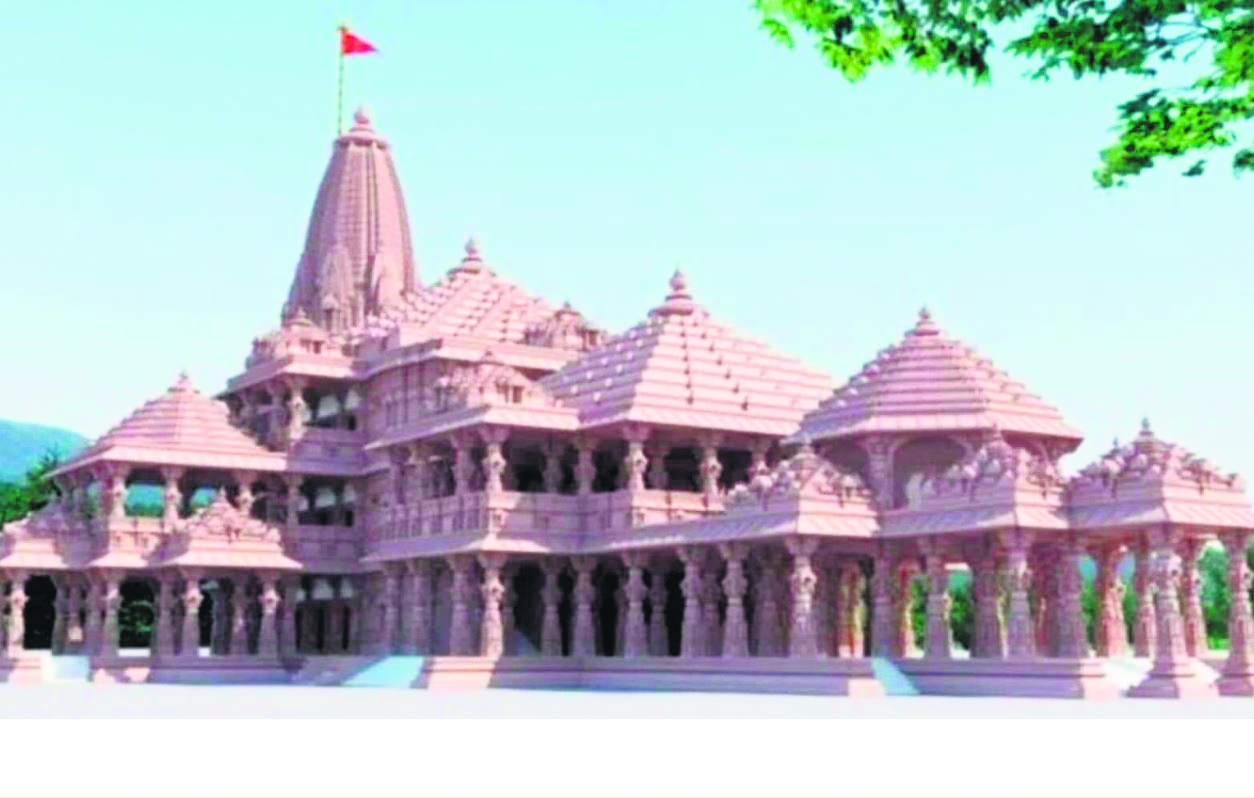The Shri Ram Janmabhoomi Teerth Kshetra trust has shared information regarding the fundamental elements of the temple’s design in preparation for the upcoming grand consecration ceremony of the Ram Mandir, which is set to take place on January 22.
The Mandir follows the conventional Nagara architectural style and measures 380 feet in length (east-west), 250 feet in width, and 161 feet in height. Nagara architecture, which originated in North India, is characterized by its towering pyramidal structures known as Shikharas, crowned with a Kalash at their summits. The temple’s pillars showcase intricate carvings, while the walls are adorned with sculptures and reliefs.
The Ram Mandir, as stated by the Shri Ram Janmabhoomi Teerth, is a three-storey structure, with each level measuring 20 feet in height. It boasts a grand total of 392 pillars and 44 doors.
The innermost sanctum of the temple is known as the Garbhagriha, which houses the enshrined deity. Within the main sanctum sanctorum, one can find the idol of Shri Ram Lalla, depicting the childhood form of Bhagwan Shri Ram. Additionally, on the first floor, there is a Shri Ram Darbar.
The temple complex encompasses five distinct Mandaps, or halls: the Nritya, Rang, Sabha, Prarthna and Kirtan Mandaps. Statues of deities, gods and goddesses adorn the pillars and walls throughout.
Entry to the Mandir is through the east-facing Singh Dwar entrance accessed by 32 stairs, with provisions for wheelchair accessibility via ramps and lifts. A rectangular boundary wall, or Parkota, 732 meters in length and 14 feet wide encloses the Mandir and houses additional temples dedicated to Surya Dev, Devi Bhagwati, Ganesh Bhagwan and Bhagwan Shiv at each of its four corners.
Nearby sits a historic well from ancient times associated with Sita. Additional proposed temples within the complex will honor figures such as Maharshi Valmiki, Maharshi Vashishtha, Maharshi Vishwamitra, Maharshi Agastya, Nishad Raj, and Mata Shabri.
The long-restored ancient temple of Bhagwan Shiv along with the installation of Jatayu can be found in the southwestern sector of the site, at Kuber Tila. No iron is used in the Mandir’s construction and a 21-foot thick granite plinth protects the structure from ground moisture.
A foundation layer of roller-compacted concrete 14 meters thick, resembling artificial rock, supports the Mandir. Additional features include sewage and water treatment facilities, fire safety systems, and an independent power station.
A 25,000-person Pilgrims’ Facility Center is also under development, featuring medical amenities and locker storage. Separately, bathing areas, restrooms and open water taps will aid visitors.
Using exclusively traditional Indian construction methods and materials, emphasis is placed on environmental sustainability with 70% of the 70-acre site maintained as green space including water conservation efforts.









